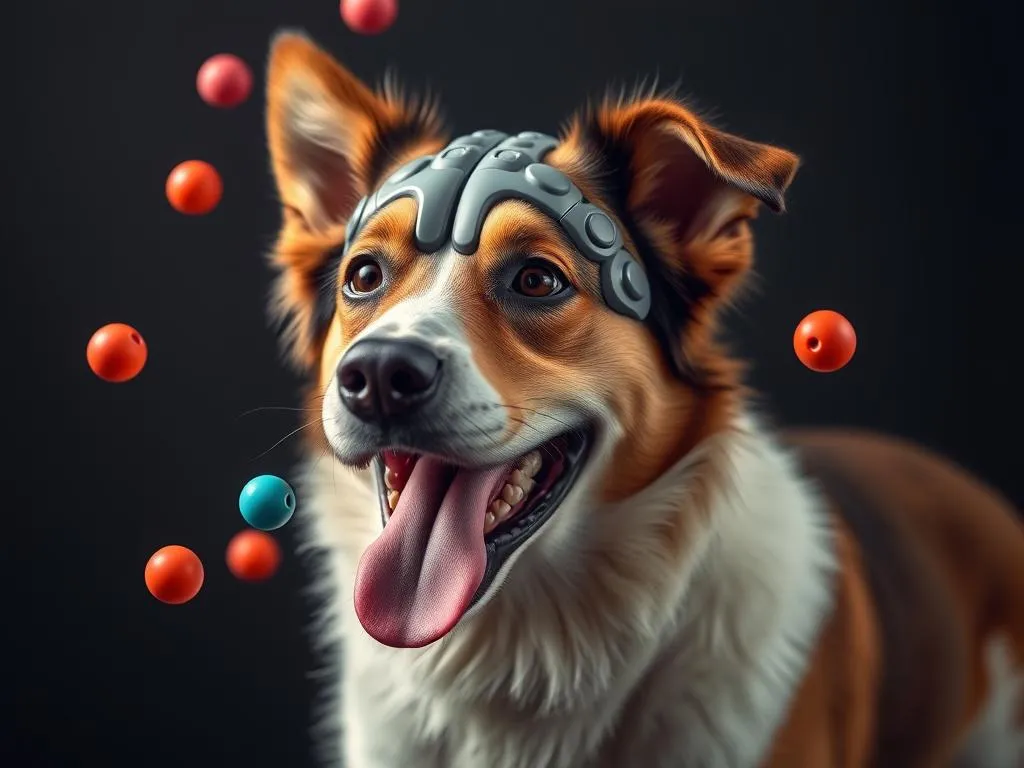
Introduction
When it comes to dog training, many pet owners focus primarily on physical activities. However, brain games for dogs offer an equally important avenue for enhancing your pet’s overall well-being. Just like humans, dogs require mental stimulation to thrive. Engaging their minds not only improves their cognitive skills but also enhances their emotional health. The incorporation of brain games into your dog’s routine can lead to a happier, more balanced pet.
This article aims to delve deeper into various brain games for dogs, providing insights and recommendations for activities that can enrich your dog’s life. By exploring a variety of engaging activities, we hope to inspire you to integrate these fun and beneficial games into your daily routine.
Understanding Brain Games for Dogs
What Are Brain Games?
Brain games for dogs are activities designed to stimulate a dog’s mind, encouraging them to think, problem-solve, and engage in cognitive challenges. These games can be as simple as hide-and-seek or as complex as interactive puzzle toys. Just like us, dogs need mental engagement to avoid boredom and associated behavioral issues.
Benefits of Brain Games
The benefits of brain games extend far beyond mere entertainment. Here are some key advantages:
- Improves Problem-Solving Skills: Dogs learn to navigate challenges, enhancing their cognitive abilities.
- Reduces Boredom and Anxiety: Engaging activities can help alleviate feelings of boredom, which often leads to destructive behaviors.
- Strengthens the Bond Between Owner and Dog: Participating in these activities together fosters a deeper connection and understanding.
Types of Brain Games
When considering brain games for dogs, it’s essential to distinguish between different types of stimulation:
- Mental vs. Physical Stimulation: While physical activities are crucial, mental challenges provide unique benefits that physical exercise may not.
- Structured Games vs. Free Play: Structured games have specific rules and objectives, while free play allows for exploration and creativity.
Popular Brain Games for Dogs
Puzzle Toys
Puzzle toys are a fantastic way to engage your dog’s mind. These toys require dogs to manipulate components to access treats or toys hidden inside. Popular options include:
- Outward Hound Hide-A-Squirrel Puzzle Toy
- Nina Ottosson by Outward Hound Interactive Puzzle Toys
When introducing puzzle toys to your dog, start with simpler designs and gradually increase the difficulty as your dog becomes more adept at solving them.
Hide and Seek
Playing hide and seek with your dog is not only fun but also a great way to teach recall commands. Start by having your dog stay in one place while you hide somewhere in the house. Call your dog’s name and reward them with treats when they find you. Variations include hiding treats around the house for your dog to sniff out.
Scent Work Games
Dogs have an extraordinary sense of smell, making scent work games a natural way to engage their minds. You can introduce simple scent work activities like hiding treats in different rooms and allowing your dog to find them. For more advanced training, consider setting up scent trails with specific cues or even enrolling in a scent detection class.
Obstacle Courses
Designing a dog-friendly obstacle course can provide both physical and mental stimulation. Use items like cones, tunnels, and jumps to create challenges that require your dog to think and navigate. Not only does this enhance their problem-solving abilities, but it also provides a great workout.
Clicker Training Games
Clicker training is an excellent method for teaching your dog new tricks while also serving as a brain game. Use the clicker to reinforce commands, and turn this training into a game by introducing various commands or tricks in a fun, engaging manner. This method encourages cognitive engagement while strengthening the bond between you and your pet.
DIY Brain Games for Dogs
Household Items as Brain Game Tools
You’d be surprised at how many common household items can be repurposed into engaging brain games. For example:
- Towels: Roll treats in a towel and let your dog unroll it to find them.
- Boxes: Hide treats in empty boxes, layering them to create a scavenger hunt.
Always ensure that the items you use are safe and free of any small parts that could be a choking hazard.
Crafting Homemade Puzzle Toys
Creating your own puzzle toys can be a fun and cost-effective way to engage your dog. Here’s a simple step-by-step guide:
- Choose a Base: Use a muffin tin or a cardboard box.
- Add Treats: Place treats in some of the compartments or boxes.
- Cover Them: Use tennis balls or crumpled paper to cover the treats.
- Encourage Your Dog: Show your dog the puzzle and encourage them to figure it out.
Feel free to customize based on your dog’s preferences, such as using their favorite treats.
Interactive Training Sessions
Training sessions themselves can be transformed into brain games. Incorporate commands, tricks, and even agility training into your playtime. The key is to keep sessions short and fun, ensuring that your dog remains engaged and eager to learn.
Incorporating Brain Games into Daily Routine
Setting a Schedule
To reap the full benefits of brain games for dogs, it’s essential to establish a routine. Aim for 10-15 minutes of dedicated brain game time each day. This can be balanced with physical exercise, ensuring your dog gets a well-rounded experience.
Tracking Progress
Monitoring your dog’s engagement and progress can help you tailor activities to their needs. Take note of which games your dog enjoys most and adjust your schedule accordingly. Look for signs of frustration or boredom to determine when it’s time to switch up the activities.
Engaging with Other Dogs
Social play and group games can enhance the experience for your dog. Organizing playdates or attending dog parks can provide opportunities for your dog to engage in brain games with others. Group scent work challenges or agility courses can make for fun outings that stimulate both mind and body.
Troubleshooting Common Issues
Lack of Interest
If your dog shows a lack of interest in brain games, it may be time to try something new. Rotate games regularly and introduce varying levels of difficulty to rekindle their enthusiasm. Keep an eye out for behavioral changes that might indicate your dog needs a new challenge or different types of stimulation.
Overstimulation or Frustration
Recognizing signs of overstimulation is crucial. If your dog becomes overly excited or frustrated, take a break and allow them to calm down. Creating a quiet space for your dog to relax after a session can be beneficial in maintaining their overall mental health.
Safety Concerns
Safety should always be a priority when engaging in brain games for dogs. Ensure that toys are durable and appropriate for your dog’s size and chewing habits. Monitor your dog during playtime to prevent any accidents or ingestion of foreign objects.
Conclusion
Incorporating brain games for dogs into your pet’s routine can yield numerous benefits, from enhancing cognitive skills to strengthening your bond. The joy of engaging your dog’s mind is immeasurable, and it can lead to a happier and healthier life for your furry friend.
Experiment with various activities and observe what resonates best with your dog. Remember, mental stimulation is just as vital as physical exercise in ensuring your dog’s well-rounded development.
Frequently Asked Questions (FAQs)
What age can I start brain games with my puppy?
You can start introducing brain games to your puppy as early as 8 weeks old. Simple games like hide and seek or basic puzzle toys can be beneficial for their cognitive development.
How often should I play brain games with my dog?
Aim for 10-15 minutes of brain games each day. This can be adjusted based on your dog’s energy levels and interest.
Can brain games replace physical exercise?
While brain games for dogs are excellent for mental stimulation, they should complement physical exercise rather than replace it. A balanced routine includes both physical and mental activities.
Are there brain games for older dogs?
Absolutely! Older dogs can benefit from brain games that are gentle on their joints. Look for low-impact activities like scent work or simple puzzle toys that encourage mental engagement without physical strain.
By integrating these insights and activities, you can dramatically enhance your dog’s quality of life, making every day more enriching and enjoyable.









